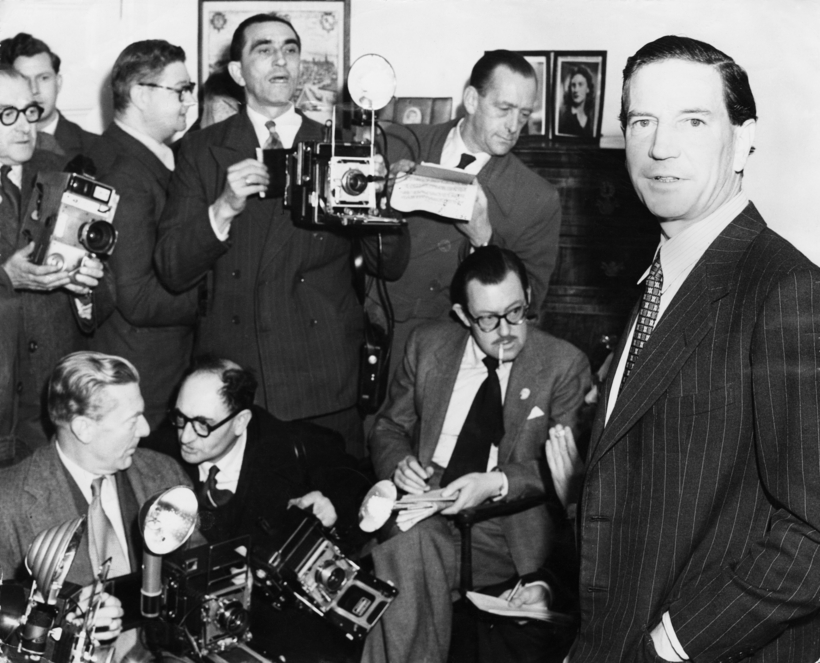For players of the Great Game that is the nonfiction spy-lit biz, there are two fairly standard bits of publishing tradecraft. One is to settle on a subtitle that trumpets a superlative—say, the “greatest,” the “best,” the “most,” and then add the appropriate string of nouns (e.g., “the greatest espionage story of the Cold War”). This is done to assure the prospective reader (and, hopefully, buyer) that while there are shelves (and shelves) of competing real-life accounts out there, this is the essential book, the one that tells a truly significant tale. The second, no less wishful marketing strategy is to create jacket copy that promises that the work is “as compelling” or “as suspenseful” as a novel by John le Carré. It’s shamelessly tangential branding designed to convey that a book of reportage, an espionage history, offers a read as complex and insightful as the Spy Master’s carefully wrought, character-driven fictional narratives.
These observations—one professional’s seditious notions on the tricks of his trade—are prompted by my having read Betrayal in Berlin, by Steve Vogel, a former Washington Post reporter and, more recently, a military historian and author. Vogel capably recounts the often told (in books, a feature film, and documentaries) espionage story of the tunnel built into East Berlin at the tense height of the Cold War, which allowed Western spies to tap into the Russian telecommunication systems.
A Mole in Their Midst
Vogel’s account has its merits: it’s deeply researched (although his assertion that Kim Philby “likely” played a role in the Soviets’ momentous decision to change their codes in October 1948 is flawed: Philby didn’t come to Washington until 1949, and it wasn’t until then that the mole learned ingenious American cryptologists had cracked the K.G.B.’s cipher); doggedly comprehensive (albeit at times the narrative is more exhausting than exhaustive as Vogel keeps spinning out the tale); and he consistently strives to put some flesh on the bones of his large cast of characters (nevertheless, by the sixth, or at least the seventh, reference to the rivers of martinis consumed by Bill Harvey, the rambunctious C.I.A. mastermind directing the operation, the reader grows punchy, too; and, sometimes, the portraits are more baffling than artful: V. M. Molotov is “known for both his iron will and his iron backside.” Huh? A genuine man of steel?).
At its most successful, the narrative is spun like a double helix—the life of George Blake, the double agent who disclosed the elaborately covert plan (“cover stories within cover stories” was how future C.I.A. director Richard Helms would proudly look back at the scheme in his memoir) to his Soviet spymasters before the first shovel had even been struck into the ground, is nicely intertwined with the earnestly detailed account of the tunneling mission.
Yet, by the book’s end, I couldn’t help but wonder what Betrayal in Berlin added to the already large library on the tunnel and the curious life of George Blake. And it was that impolite thought that first brought me to ponder how dutifully Vogel’s handlers (with or without his acquiescence?) had labored to establish the book’s commercial bona fides. There is the excessively inflated subtitle: “The True Story of the Cold War’s Most Audacious Espionage Operation.” And there’s jacket copy that lavishly insists the book is “as thrilling as the novels of John le Carré.” But these bits of puffery only reinforce what I felt was fundamentally problematic about the entire work.
The narrative is spun like a double helix—the life of double agent George Blake is intertwined with an account of the tunneling mission.
Consider the claim of audacity. Sure, toujours l’audace; that’s always good fodder for a tale. However, in this case, whose audaciousness? Vogel’s premise is that the gung-ho American and British intelligence services deserve credit for slyly burrowing a quarter-mile tunnel right under the noses of the Russians. He pooh-poohs any mischievous thoughts that simply because the K.G.B. knew from the get-go about the tap on their telephone lines, they’d taken advantage of this unique opportunity to muddy the daily flowing waters with disinformation.
Why not? Well, he maintains that the pragmatic Soviets made a cost-benefit analysis of the situation and decided it was worth more to them in the long run to keep Blake running as a mole rather than to risk his being exposed if the tunnel came crashing down the moment it went operational. They never, ever resorted to any mischief; a former high-ranking Soviet operative is quoted to prove this improbable truth. And the great Spy Master’s name is invoked to suggest that any real-life spy drama involving a good measure of double-dealing is cut from the same literary cloth as his complex plots where, as le Carré incisively once put it, “betrayal is a repetitious trade.”
I guess that is all possible. But nevertheless I’m having a hard time buying it. In fact, it’s my professional instinct that it was the Soviets’ audaciousness that should be celebrated. The West spent as much as $30 million (of 1960 dollars) on the tunnel and its support operations, assigning hundreds of personnel who labored for several years on the top-secret task of plowing through the mountains of tape recordings of intercepted calls, while in the disciplined process Moscow Centre was willing to give up some intelligence chicken feed to spread some Big Lies. And if you don’t believe that was the canny game the K.G.B. was playing, well then you’re probably convinced, as one “stable genius” of a counter-intelligence agent is, that a 400-pound loner in his basement was behind the interference in the last presidential election. After all, Putin staunchly denied any role in that mischief too.
And as for the attempt, however oblique, to christen Betrayal in Berlin with le Carré’s blessing, the Spy Master’s derisive mentions of the tunnel operation in a sharp-tongued essay suggest that rather than any alleged suspense, he would dwell on the dark humor of the entire spy-vs.-spy tunnel operation: both sides keeping themselves in business by playing a futile, arguably pointless game with one another. Now, that would be fodder for an inventively researched book on the Berlin tunnel, a work that could add something new to well-trodden ground.
Howard Blum is the author of several books. His latest, The Night of the Assassins: Hitler’s Plot to Kill FDR, Churchill and Stalin, will be published next summer


